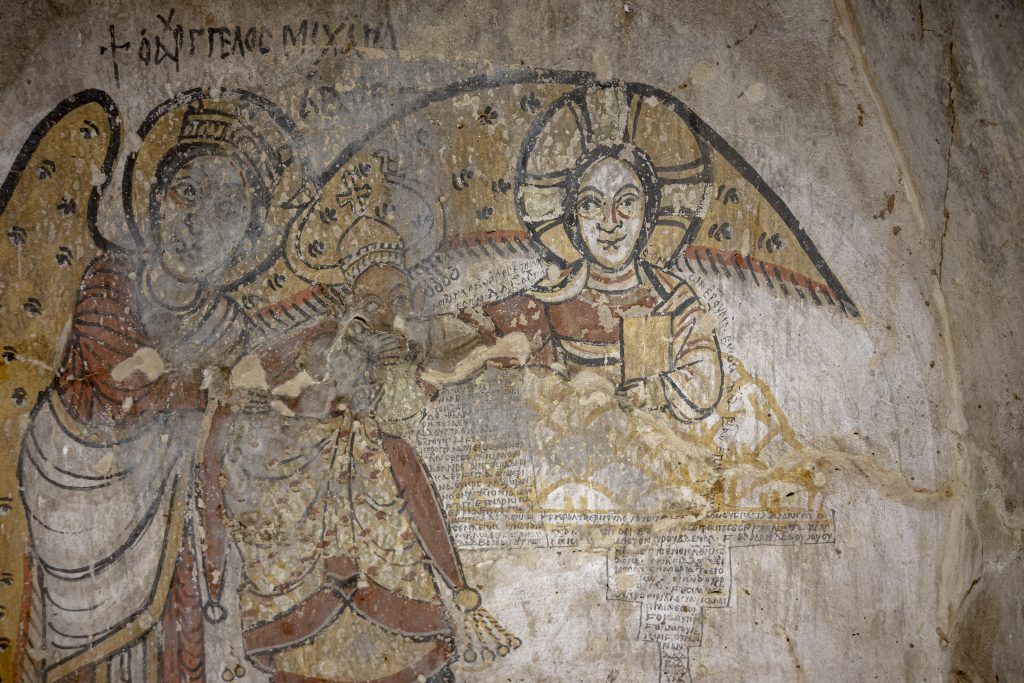Discovered by an expedition of the Centre for Mediterranean Archaeology at the University of Warsaw, the paintings from Stara Dongola, in present-day Sudan, have been included in a list of the ten most significant and interesting archaeological discoveries of the year. The list was published in the journal Archaeology, published by the Archaeological Institute of America.
Old Dongola (Old Nubian Tungul) is the capital of Macuria, one of the most prominent states of the African Middle Ages. Research team from the University of Warsaw, discovered paintings there depicting sacred figures.
The paintings show the Virgin Mary, two figures of Christ, as well as a scene presenting the triad: Christ, the archangel Michael and the Nubian king David. This is not a typical representation of the patronage of a Nubian ruler by saints and archangels.
David was one of the last rulers of Christian Macuria, whose reign marks the beginning of the end of the kingdom. The painting depicts the king bowing to Christ seated on the clouds. The ruler is supported by the archangel Michael, whose spread wings surround both the king and Christ himself with protection. Such a scene has no parallel in Nubian painting, but similar depictions can be found on the gold coins of Michael Paleologus, minted in Byzantium between 1259 and 1282.
The paintings are accompanied by inscriptions. As researchers have determined from a preliminary reading of the inscriptions in Greek, these are texts of a liturgical nature.
Inscriptions of this kind generally occur in spaces outside the main altar in the church where the Eucharist was celebrated. The Old Nubian inscription accompanying the main scene is extremely difficult to decipher. Through a preliminary reading, it is already known that King David’s name is mentioned several times and that it contains a request to God to protect the city. It is likely that this refers to Dongola, while the scene depicts King David.
Arkadiusz Słomczyński





